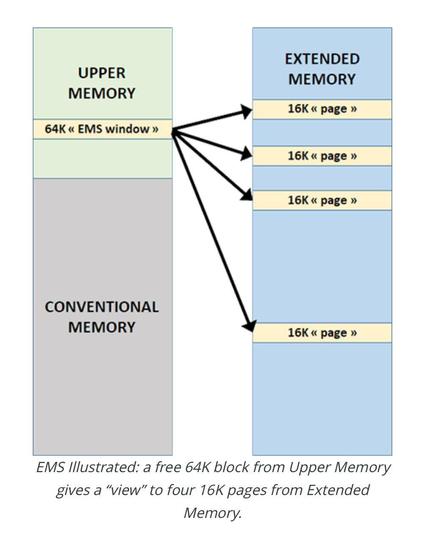Elektrische tramlijn, vermoedelijk langs Goenoengsari te Batavia, ca 1910, Jl Gunung Sahari, Jakarta, 2022
#historia #history #histodon #histodons #vintage #old #circa #colonia #indonesia #city #road #photography #photo #classic #designbuilding #storybuilding #indonesia #heritage #historiindonesia #travel #building #travelgram #historicalbuilding #oldbuilding #tourismhistory #culturalheritage #oldhouse #heritagecity #oldphotos #trip #memory #museum #mastodonArt #random #railroads #beforeandafter
#MEMORY
A Childhood Memory: Sector one https://nozycat.wordpress.com/2025/06/25/a-childhood-memory-sector-one/ #Childhood, #Memory
#Google has released #Gemma3n, an #open #AImodel designed for developers: It can process images, audio, video, and text inputs to generate text and is optimised for on-device use, requiring as little as #2GB of #memory. https://www.neowin.net/news/google-releases-gemma-3n-a-new-ai-model-built-for-mobile-devices/?AIagents.at #AIagent #AI #ML #NLP #LLM #GenAI
NVIDIA Explains RTX 5050 Desktop GDDR6 Memory Choice Over Laptop GDDR7
#gpu #graphicscard #HardwareSpecifications #memory #nvidia
https://blazetrends.com/nvidia-explains-rtx-5050-desktop-gddr6-memory-choice-over-laptop-gddr7/?fsp_sid=57108
REM sleep: what is it good for?
Image credit: Ionut Stefan
Everybody sleeps, that’s something we can all agree on. But even though on the outside all sleep looks mostly identical, on the inside, there are quite a few differences. During a continuous episode of sleep, your brain goes through several sleep stages distinguished by different patterns of activity. Not only is their electrical signature distinct, but the brain actually does specific activities in each stage. What’s less clear, unfortunately, is what exactly those activities are.
For today, we’ll be focusing on just one sleep stage, rapid eye movement or, in short, REM sleep. We’ve all heard about it before. Still, while the concept is so well-known, its real function is far from clear. REM sleep usually comes up together with dreaming and learning, yet, as we’ll see in this article, that comes with a lot of side notes and it’s definitely not the full picture.
How do we spot REM sleep?
REM sleep is identified by a couple of criteria: high-frequency brain activity in the EEG, similar to that in the awake state; rapid eye movements; and muscle atonia, i.e. loss of muscle tone leading to muscle paralysis (presumably so we don’t act out our dreams).
Based on these features, REM is easy to distinguish from the rest of sleep, called non-REM (I know, super-original, right?): in the latter, we observe low-frequency, high-amplitude waves, no rapid eye movements, and no muscle atonia. Basically, in non-REM sleep, it looks like the entire brain is synchronously shouting the same tone, whereas in REM, it looks like everybody’s talking over each other.
Before we go into the details of what REM does, I want to clarify something: based on the current scientific evidence, we cannot say that one type of sleep is more beneficial than the other. So we can’t say that healthy adults should get more REM or more non-REM sleep. In fact, it’s possible that the ratio between the two types of sleep and the order in which they occur might also be important for the proper functioning of the brain.
What does REM sleep do?
You’ll often hear that all animals sleep. While that might not be true (for one, we haven’t studied all animals yet; for another, there are some species where it’s debated whether we see sleep or simply a period of quiet waking), still, a lot of the animals we have observed so far do, in fact, sleep, and many also show REM-like sleep.
Then again, from an evolutionary perspective, sleep seems quite dangerous: you pass out for a few hours, leaving yourself exposed to predators. And if the point of sleep is to conserve energy, REM is also not particularly good at that, because the metabolic demands are higher compared to non-REM (even close to wakefulness in some cases). So the logic goes, because sleep (and REM) are so widespread, they must be doing something pretty darn important. But what?
Theory # 1: learning
We’ve established that brain activity during REM looks very similar to that of the awake brain. People woken up from REM sleep also report very vivid dreams. Taken together, these two fueled perhaps the oldest theory regarding the role of REM sleep, namely that it consolidates memories of our waking life.
But is this supported by evidence? To a certain extent, yes, but it’s more complicated than that. Studies conducted in rats showed that learning certain tasks during the day was sometimes followed by more time spent in REM sleep. The keyword here is sometimes. In some cases, there wasn’t just an increase in REM, but in non-REM sleep as well. And other times, there was no effect at all.
Disrupting REM sleep in rats did indeed lead to worse memory of the tasks. Unfortunately, in most studies, the wake-up procedure itself was very stressful. The rats fell in the water whenever they entered REM sleep. And stress is a known disruptor of memory consolidation, so it’s hard to say whether it was really the lack of REM which caused the effect. More gentle procedures, such as head lifting, did show that memory consolidation is impaired when rats are prevented from getting REM sleep. This offers some support for the theory (although I’d personally argue any form of being woken up before getting enough sleep is stressful in itself), as does the pharmacological suppression of REM.
In humans, results were even less consistent than in rats. In short, the most consistent ones were obtained for tasks related to procedural memory, i.e. motor skills, and to emotional memory. Regarding the first one, complete lack of REM sleep, such as in treatment with antidepressants, didn’t lead to any significant impairment. That means, although REM might play a role here, it’s not essential. As for the second one, a recent study suggests it’s not REM by itself, but the sequence of non-REM and REM sleep that contributes to the proper conservation of these memories.
Like I said in the beginning, lots of side notes here, but to sum up until now: the role of REM sleep in memory consolidation appears to vary with the memory type. Additionally, both REM and non-REM might effectively work together in ensuring proper memory storage.
Theory # 2: forgetting
As much as we might hate it when information refuses to stick around the brain, forgetting is important for its healthy functioning. People who have super-memories, more formally known as highly superior autobiographical memory, often report challenges like intrusive memories or emotional overload, suggesting that forgetting may serve a critical psychological function. Plus, at the cellular level, constantly strengthening and weakening synapses is what allows our brains to remain flexible and learn.
The idea that REM might have something to do with forgetting is also relatively old. It was put forward in 1983, when two researchers suggested that dreaming during REM sleep acts as a sort of “reverse learning” mechanism which gets rid of “parasitic modes” of activity that come from overstimulation. Sadly, the evidence doesn’t currently support this. Instead, it appears that a global weakening of synapses happens during non-REM sleep.
Theory # 3: defending the visual cortex
The third potential role on our list also has to do with synaptic plasticity, but with a twist. It’s been established for some time now that the cortex reorganizes itself depending on the inputs it gets, or the lack thereof. In plain English, if you lose one of your senses (for example, if you go blind), the brain area that is responsible for this sense (here, vision), gets taken over by other senses. What’s surprising is the speed at which this happens in the visual cortex specifically: within an hour of blindfolding participants and asking them to perform a tactile task, researchers were able to detect touch-related activity in the primary visual cortex.
Given that we keep our eyes closed for longer than that during sleep, we should be seeing worse when we wake up than when we go to sleep. But that’s not the case. At the same time, scientists have observed something called “ponto-geniculo-occipital waves”. These are waves of activity that propagate from the pons to the lateral geniculate nucleus to the occipital cortex (i.e., visual cortex) and which appear during REM sleep. That’s how the defensive activation theory was born: that through these waves, REM sleep keeps the visual cortex active to prevent takeover by other senses.
If this is true, it would explain why dreams tend to be so visual in nature. But that’s a big if. So far, scientists have observed some correlations between the degree of plasticity (how fast synapses change, and thus how fast we’d expect the takeover to occur) and the amount of REM sleep, both when looking at multiple species, and when comparing teenagers and older adults.
Still, more extensive testing is needed before a final verdict. For example, what happens when REM sleep is reduced or suppressed? And does this extend to all species who display REM sleep?
Theory # 4: keeping the brain warm
The last theory for today goes in a very different direction, proposing that the role of REM sleep is to warm up the brain. Why would the brain need that, you ask? We’ve mentioned in the beginning that sleep is a state in which the metabolism is reduced. That means your body, including your brain, burns less energy, which also causes its temperature to drop.
The key point of the brain warming theory is that there probably is a certain temperature below which the brain wouldn’t function properly anymore. Enter REM sleep, with its awake-like activity patterns and metabolic costs, to save the day. During REM, brain temperature does increase, while the body remains relatively cool. Once the job is done, the brain can go back to non-REM and have its temperature drop again.
This theory isn’t novel (even though that’s how it made the rounds in 2022) and if it holds up, it does provide a nice explanation for the alternation between non-REM and REM sleep. The good news is that there is some evidence in support of it. Animals with low body temperatures spend more time in REM sleep. Cutting the connection between the brainstem (where REM sleep is initiated) and the cortex in cats makes them spend more time in REM if the room is cold and less time if they’re heated up.
The bad news, as usual, is the contrary evidence. In some species, such as the bearded dragon lizard, the brain doesn’t actually warm up during REM-like sleep. Of course, one could still argue the theory only holds in warm-blooded animals and that in the cold-blooded ones, we can’t be sure the same sleep stages exist. But in pigeons, the temperature increase is so small that it’s virtually non-significant.
What’s more, both birds and mammals sleeping in riskier situations can actually suppress their REM sleep. In this situation, the lack of brain warming during REM would, in fact, leave the animals more vulnerable to threat upon awakening. So even though the brain does definitely warm up during REM sleep for many animals, it’s possible brain warming isn’t the main function of REM either.
Where does that leave dreams?
REM sleep is so intrinsically linked to dreaming in the public’s perception that it deserves a special, although brief, mention. The function of dreams is a separate topic of its own and just as unclear, if not more so, than that of REM sleep.
But we’d like to highlight a couple of key points: while dreaming does happen in REM, it’s not exclusive to this sleep stage. Dreams do occur in non-REM sleep as well, although it remains up for debate if they’re qualitatively the same in content, vividness, and structure. More importantly, the primary function of REM sleep is not to produce dreams. From what we know and what we’ve seen so far here, dreaming appears to be a by-product of the underlying functions of REM sleep, rather than its purpose.
Where does that leave the function of REM?
It definitely leaves a lot of open questions and a lot of room for further research. So far, it looks like REM sleep refuses to stick to one function alone across all species. As more evidence comes in, it’s possible that some of the theories presented here will be abandoned, others might be adapted, and new ones could be proposed. In the end, it’s more likely we’ll end up with a mosaic of functions than with one holy grail.
What did you think about this post? Let us know in the comments below. And if you’d like to support our work, feel free to share it with your friends, buy us a coffee here, or even both.
Subscribe to our RSS feed here.
You might also like:
References
Crick, F., & Mitchison, G. (1983). The function of dream sleep. Nature, 304(5922), 111–114. https://doi.org/10.1038/304111a0
Eagleman, D. M., & Vaughn, D. A. (2021). The Defensive Activation Theory: REM Sleep as a Mechanism to Prevent Takeover of the Visual Cortex. Frontiers in Neuroscience, 15. https://doi.org/10.3389/fnins.2021.632853
Gravitz, L. (2019). The forgotten part of memory. Nature, 571(7766), S12–S14. https://doi.org/10.1038/d41586-019-02211-5
Rasch, B., & Born, J. (2013). About Sleep’s Role in Memory. Physiological Reviews, 93(2), 681–766. https://doi.org/10.1152/physrev.00032.2012
Siegel, J. M. (2008). Do all animals sleep? Trends in Neurosciences, 31(4), 208–213. https://doi.org/10.1016/j.tins.2008.02.001
Siegel, J. M. (2022). Sleep function: an evolutionary perspective. The Lancet Neurology, 21(10), 937–946. https://doi.org/10.1016/s1474-4422(22)00210-1
Tononi, G., & Cirelli, C. (2003). Sleep and synaptic homeostasis: a hypothesis. Brain Research Bulletin, 62(2), 143–150. https://doi.org/10.1016/j.brainresbull.2003.09.004
Ungurean, G., Barrillot, B., Martinez-Gonzalez, D., Libourel, P.-A., & Rattenborg, N. C. (2020). Comparative Perspectives that Challenge Brain Warming as the Primary Function of REM Sleep. IScience, 23(11), 101696. https://doi.org/10.1016/j.isci.2020.101696
Yuksel, C., Denis, D., Coleman, J., Ren, B., Oh, A., Cox, R., Morgan, A., Sato, E., & Stickgold, R. (2025). Both slow wave and rapid eye movement sleep contribute to emotional memory consolidation. Communications Biology, 8(1). https://doi.org/10.1038/s42003-025-07868-5
#dreams #forgetting #learning #Memory #neuroscience #remSleep #Sleep #vision #warmth
Do you remember your first day of school in detail?
I’m reading an autobiography now where the author describes all the things that happened on his first day of kindergarten, at age five.
I barely recall kindergarten. I could tell you the name of my teacher, but I couldn’t tell you what she looked like. I remember one specific toy we had, and that we got to make things from construction paper sometimes. But specific events? Conversations? No way.
🌍🎓 We are excited to announce an upcoming lecture in the “De/Coloniality Now” series: “Victimhood Nationalism: History and Memory in a Global Age” by Prof. Jie-Hyun Lim of Sogang University.
🗓 Date: June 26, 2025 🕕 Time: 6:00 PM 📍 Location: FRIAS, Albertstraße 19, Freiburg
Hosted by “De/Coloniality Now” in collaboration with @ManuelaBoatca, this event promises insightful discussions on the intersections of nationalism, history, and global memory politics.
Don’t miss this opportunity to deepen your understanding of the global dynamics of victimhood nationalism.
🔗 Connect with us and share your thoughts! @sociology @empires @histodons @histodon @academicchatter
#sociology #nationalism #memory #globalstudies #histodons #histodon #academicmastodon
"The present is never the present. It's layered with persistent pasts." - Sam, in George Zebrowski's novel Macrolife
#bookstodon #quotes #memory
Pergear’s New CFexpress 4.0 Type B Memory Cards Are Very Affordable https://petapixel.com/2025/06/25/pergears-new-cfexpress-4-0-type-b-memory-cards-are-very-affordable/ #cfexpresstypebcard #cfexpresstypeb #cfexpress40 #cfexpress4 #memorycard #Equipment #panasonic #fujifilm #memory #Canon #nikon #News #card
The topic is #happiness. #BryanHaut begins his answer by discussing what it means to BE. Somehow we wrap it all up in under 15 minutes AND STILL talk about puppies and rollercoasters. #YoureOnMuteThePodcast Episode 8: https://open.spotify.com/episode/7l19PhrdfYvR8dCS8rwiii?si=f223f7b957194042 #memory #happiness #podcast
A new happy snapshot, a story about a picture I’ve taken, this time about a visit to the Guinness brewery and the picture I took after the visit.
I just learned that the Steckschwein memory paging resembles EMS memory if you imagine the 6502's whole 64k address space as the "EMS Window"
Source: https://www.xtof.info/the-640k-memory-limit-of-ms-dos.html#h-ems-expanded-memory-specification
#6502 #retrocomputing #ems #dos #memory #mmu
Book Review: Japanese writer Mizuki Tsujimura’s Lost Souls… evokes the ethos of what it’s like to be left behind
In a literary landscape overcrowded with tales from beyond the veil, Mizuki Tsujimura’s Lost Souls M…
#Japan #JP #JapanNews #EastAsianliterature #grief #Japanese #Japanesenews #LostSoulsMeetUnderAFullMoon #memory #MizukiTsujimura #news #regret
https://www.alojapan.com/1306406/book-review-japanese-writer-mizuki-tsujimuras-lost-souls-evokes-the-ethos-of-what-its-like-to-be-left-behind/
https://www.alojapan.com/1306406/book-review-japanese-writer-mizuki-tsujimuras-lost-souls-evokes-the-ethos-of-what-its-like-to-be-left-behind/ Book Review: Japanese writer Mizuki Tsujimura’s Lost Souls… evokes the ethos of what it’s like to be left behind #EastAsianLiterature #grief #Japan #JapanNews #Japanese #JapaneseNews #LostSoulsMeetUnderAFullMoon #memory #MizukiTsujimura #news #regret In a literary landscape overcrowded with tales from beyond the veil, Mizuki Tsujimura’s Lost Souls Meet Under A Full Moon doesn’t so much rise above the crowd as it quietly walks through it…
People continue to think about #AI in terms of #2010s computing, which is part of the reason everyone gets it wrong whether they're #antiAI or #tech bros.
Look, we had 8GB of #ram as the standard for a decade. The standard was set in 2014, and in 2015 #AlphaGo beat a human at #Go.
Why? Because, #hardware lags #software - in #economic terms: supply follows demand, but demand can not create its own supply.
It takes 3 years for a new chip to go through the #technological readiness levels and be released.
It takes 5 years for a new #chip architecture. E.g. the #Zen architecture was conceived in 2012, and released in 2017.
It takes 10 years for a new type of technology, like a #GPU.
Now, AlphaGo needed a lot of RAM, so how did it stagnate for a decade after doubling every two years before that?
In 2007 the #Iphone was released. #Computers were all becoming smaller, #energy #efficiency was becoming paramount, and everything was moving to the #cloud.
In 2017, most people used their computer for a few applications and a web browser. But also in 2017, companies were starting to build #technology for AI, as it was becoming increasingly important.
Five years after that, we're in the #pandemic lockdowns, and people are buying more powerful computers, we have #LLM, and companies are beginning to jack up the const of cloud services.
#Apple releases chips with large amounts of unified #memory, #ChatGPT starts to break the internet, and in 2025, GPU growth continues to outpace CPU growth, and in 2025 you have a competitor to Apple's unified memory.
The era of cloud computing and surfing the #web is dead.
The hype of multi-trillion parameter #LLMs making #AGI is a fantasy. There isn't enough power to do that, there aren't enough chips, it's already too expensive.
What _is_ coming is AI tech performing well and running locally without the cloud. AI Tech is _not_ just chatbots and #aiart. It's going to change what you can do with your #computer.
Advanced Java Garbage Collection Concepts: Weak References, Finalization, and Memory Leaks
Weak references are not always the answer to memory leaks, unless combined with good programming practices. What happens when there's an issue with the finalize() method?
https://dzone.com/articles/advanced-java-garbage-collection-concepts
Journey into the Mind: How Brain Networks Enable Thought, Emotion, and Social Life
#BrainScience #Neuroscience #PrefrontalCortex #DefaultModeNetwork #SelfReflection #Memory #SocialCognition #BrainHealth #Neuroplasticity #MentalWellness #Neurochemistry #StressAndBrain #CognitiveScience #BrainConnections #MindAndBrain







